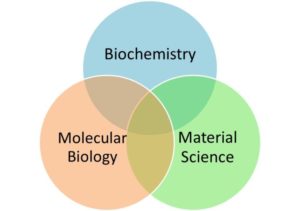Lipoprotein Drug Delivery Research Laboratory
Lipoprotein Drug Delivery Research Lab works at the interface of biochemistry, molecular biology, and material sciences. Our efforts are focused on understanding the cholesterol metabolism in cancer and use of reconstituted high-density lipoproteins (rHDL) to deliver drugs to cancer cells via HDL receptor SR-B1. Below are the 2 important aspects of rHDL nanoparticles
1. Non-leaky, stable, biocompatible, preparation of therapeutic load that can evade mononuclear phagocytic system (MPS) as rHDL is ‘Natures Drug Delivery System’ for cholesterol.
2. Targeted, selective, cytoplasmic delivery of anti-cancer agents to malignant cells without endosomal uptake of rHDL nanoparticles
Research work is underway in areas listed below
- Investigating the correlation between SR-B1 overexpression and aggressiveness of multiple
 cancers, develop and design rHDL-based nanoformulations for therapeutic intervention.
cancers, develop and design rHDL-based nanoformulations for therapeutic intervention. - Several deadly pediatric cancers such as Ewing Sarcoma and Neuroblastoma show enhanced SR-B1 expression and efforts are underway to design rHDL based anthracycline therapy to increase the overall survival.
- RNAi therapy has long been hindered due to the endo-lysosomal degradation of therapeutic siRNA, miRNA and plasmid DNAs. Selective non-endosomal cytoplasmic delivery of payload using rHDL via SR-B1 has been proven effective in ovarian cancer. This work is in pipeline in a collaboration with Dr.Anil Sood at MD Anderson Cancer Center.
- Even though cholesterol metabolism is well-known inside brain, not much is understood about the lipoprotein movement across the blood-brain barrier and if at all they cross it. Several brain cancers such as glioblastoma can be treated with localized delivery of anti-cancer drugs as they overexpress SR-B1. Significant efforts are being invested in developing rHDL based nanosystem in this area.
To understand why we develop rHDL based formulations for anticancer drug delivery, it is imperative to understand the role of native HDL in reverse cholesterol transport. It is understood that lipid poor HDL collects cholesterol from peripheral cells/tissues (e.g macrophages) and delivers it to hepatocytes via SR-B1 receptor without undergoing endocytosis (unlike LDL receptor action) as shown.
Cholesterol being an essential component of plasma membrane as well as membrane of many intra-cellular organelles, many cancer cells over-express SR-B1 receptors in order to harvest cholesterol from patients native HDL particles. This hypothesis has been supported by observation made in many clinical studies published in recent years. This observation lead us to design the synthetic or reconstituted HDL nanoparticles laced with anti-cancer drugs that can be efficiently taken up by cancer cells eventually leading to death of cancer cells.


Social media